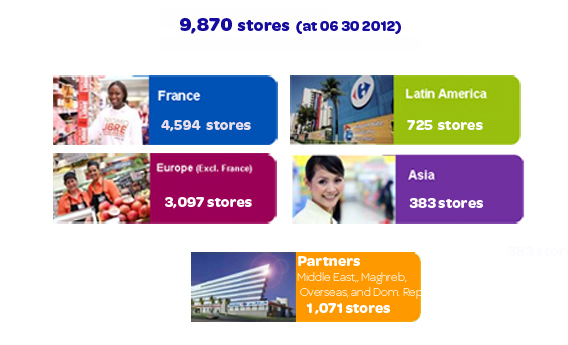
- •Failure of Carrefour internationalization strategy in Russia
- •Contents
- •Introduction 3
- •1. 1. Company Overview 4
- •Introduction
- •Chapter 1. Background
- •1. 1. Company Overview
- •1. 2. History of the company Carrefour: hypermarket pioneer.
- •1.3 . Internationalization
- •1.4 . Russian Retail Sector
- •Chapter 2. Theory and Problem
- •Chapter 3. Methodology
- •3. 1. Pest-analysis Political factors (including institutions and infrastructure)
- •Economic factors
- •Technological
- •Retail Trade in Russia
- •3. 2. Swot-analysis
- •Increasing awareness of customers with European Brands
- •Chapter 4. Company figures
- •Chapter 5. Recommendations
Saint Petersburg State University
Graduate School of Management
Group Project
Failure of Carrefour internationalization strategy in Russia
Anna Chernishova
_____________________________
Polina Khromtsova
_____________________________
Victoria Shuba
_____________________________
Ekaterina Kozhevnikova
______________________________
Instructor:
Andrei Yu. PANIBRATOV
Associate Professor
______________________________
Saint Petersburg
2012
Contents
Group Project 1
Failure of Carrefour internationalization strategy in Russia 1
Contents 2
Introduction 4
Chapter 1. Background 5
1. 1. Company Overview 5
1. 2. History of the company 7
1.3 . Internationalization 8
1.4 . Russian Retail Sector 9
Chapter 2. Theory and Problem 12
Chapter 3. Methodology 16
3. 1. PEST-analysis 16
3. 2. SWOT-analysis 25
Chapter 4. Company figures 29
Chapter 5. Recommendations 32
Introduction 3
Chapter 1. Background 4
1. 1. Company Overview 4
1. 2. History of the company 6
1. 3. Internationalization 7
1. 4. Russian Retail Sector 8
Chapter 2. Theory and Problem 11
Chapter 3. Methodology 15
3. 1. PEST 15
3. 2. SWOT 24
Chapter 4. Company figures 27
Chapter 5. Recommendations 30
Introduction
While the Russian economy suffered a setback in 2009 due to slumping oil export sales and the effects of the global economic crisis, the retail sector remains a growth leader.
Main purpose of the paper is to define internal and external reasons of failures and possible alternatives for the company’s actions. While Carrefour's withdrawal is a setback for its goal to gain a presence in all of the BRIC countries (Brazil, Russia, India and China), the company maintains a presence only in two countries, Brazil and China. Carrefour is also reportedly in talks with a local partner in India, which could further boost its presence in strong growth markets. In the year 2009, in the framework of its internationalization strategy, Carrefour envisioned Russia as a high potential market for expanding its globally known brand. Despite its penetration to the market and beginning of operations, the company eventually failed and withdrew in winter 2010. Carrefour's exit from Russia undoubtedly affected other international retailers contemplating market entry.
The objective of this group project is to identify the mistakes that caused the failure of Carrefour in Russia, understand how it happened and if it could have been improved. The structure of the paper is therefore structured into three main parts. First, we started with the introduction of the company, its history. Further on, we describe situation on Russian retail market.
Chapter 1. Background
1. 1. Company Overview
Carrefour is the second largest retail group in the world in terms of revenue and third largest in profit after Wal-Mart and Tesco and it is also the largest retail-chain group in Europe. Carrefour group currently operates four grocery store formats: hypermarkets, supermarkets, cash&carry and convenience stores. There are over 9,500 stores, either company-operated or franchises. Its revenue was €81.271 billion, with 412,464 employees all around the world1. Carrefour translates as "crossroads" in French.
Carrefour value is to make its business recognized and loved for helping its customers and consumers, enjoyable and promote a better quality of life each and every day. To achieve this dream Carrefour ensure that every day it is committed, caring and positive. These three items bring it closer to customers and consumers and reflect its personality.
The group operates about 1,302 hypermarket stores across the world, of which 228 hypermarkets in France, 494 in European countries outside France, 288 in Latin America, and 292 in Asia. In Brazil, the group operates its hypermarket business under the Atacadao brand name. These hypermarkets offer a range of competitively priced company-owned and branded products in both food and non-food categories. In addition, the hypermarkets also offer services like insurance, financial services, home computer support, travel and entertainment reservations and mobile phones.
The group operates approximately 2,919 supermarket stores in 11 countries under the banners Carrefour Express, Carrefour market, GB, GS and Champion. The supermarkets offer a wide selection of mostly food products and some nonfood products related to apparel, culture and leisure, and tableware.
Convenience stores are mainly operated by the franchisees under the banners Marche Plus, Shopi, 8 a Huit and Proxi in France; DiperDi in Italy; Carrefour Express in Belgium and Brazil; Carrefour 5 Minut stores in Poland; Carrefour City stores in Spain; and Carrefour Convenient Buy in Thailand. These stores primarily offer a wide selection of food products; these also offer a range of services such as home delivery, dry cleaning, 48-hour photo development, ticket distribution, photocopying, stamps and newspapers.
In addition to the above mentioned store formats, Carrefour also sells its products through various e-commerce websites. Carrefour operates an online grocery store, Ooshop - a leading French online supermarket. It allows customers to shop on the internet, and select from product listings including fresh and frozen items, at the same price as they would pay in Carrefour's hypermarkets, with the added benefit of home delivery. CarrefourOnline.com, offers products such as leisure products (DVDs, games, software, music, books and more), audio and video, household electrical goods, as well as music downloads and even flower and bicycle delivery.

